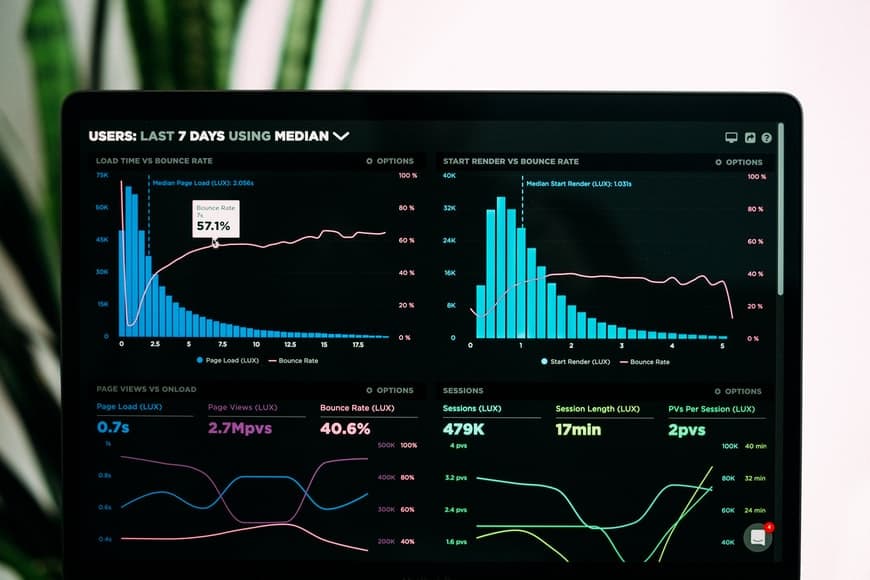Most individuals use stock and share terms interchangeably, but they are not the same thing. Even though the two phrases help investors comprehend their respective roles, their distinction is significant.
Stock is a security that reflects a portion of a company’s ownership, while a share pinpoints a portion of ownership in a specific corporation. In short, a share is the least possible unit of the company’s stock. You can follow this guide on stock vs share to get an insight into the key differences between the two terms. On a side note, if you are a beginner at the stock market, getting a robo advisor to help you make a viable investment plan could be a great idea.
Stocks vs Shares: What’s the Difference?
There’s a fine line between stocks and shares (see also penny stocks), which explains the interchangeable use of the two terms. However, a more detailed look into the two will give better insight.
What Exactly Is a Stock?
Companies’ stocks are means to raise capital for corporation expansion, purchase of equipment, launching new products, or other purposes. Investors can also use stock as a trading method for services rendered and paying off the company’s debt. As proof of ownership of the company’s stock, the corporation must provide stockholders with stock certificates.
A stock certificate identifies the investor as the owner of stocks in one or more companies. It contains information like the company’s name, the number of shares owned, and the date of purchase. You will need to send a copy of this document to your brokerage firm if you want to transfer your shares to someone else.
The most common form of stock is equity (see ‘What Is Common Equity?‘), which represents a percentage of ownership interest in one particular company that you have hopes of getting a return on your investment. However, stock ownership does not imply ownership of the company’s assets or property. A company or multiple companies may sell their stocks (see also small-cap stocks) on the open stock market through a stock exchange, but they could also buy them back as explained in our ‘What Happens When a Company Buys Back Stock?‘ post.
Stockholders, Shareholders, and Stakeholders
The terms stockholders and shareholders are also used interchangeably, as most people cannot tell the difference. A shareholder holds units of the company’s equity stock. On the other hand, stakeholders have a stake in the company like Canada Nickel, for example, and its activities affect them directly. In this way, all stakeholders are shareholders, but the reverse may not always be true.

People use these terms interchangeably referring to investors. However, the term stakeholder is more general, referring to an entity or individual with some form of financial interest in a corporation.
Purchasing a company’s stock doesn’t mean you are lending the company money. Stocks pay dividends to investors monthly, quarterly, or annually, depending on the issuing company’s earnings.
Different Types of Stocks
There are four types of shares, including common stock, preferred stock, Class A stock, and Class B stock.
Common Stock
Common stock is the most basic type of share, and it represents the majority of the total number of shares issued by a company. A common stock gives stockholders voting rights, usually one vote per share of stock.
Preferred Stock
Preferred stock is second-in-line behind the common stock, and it is usually offered at a lower price than common stock. In liquidation, the company reimburses preferred stockholders before common shareholders. Preferred stocks also have a fixed rate of return and dividends are payable based on a percentage of that par.
Class A
Class A stock represents the highest level of corporate governance, and it gives the holder more voting rights than Class B. It is often used for large corporations or blue-chip companies with complex business structures. Class A charges front-end loads. They have a greater voting power that comes at a premium price. For example, you can trade Berkshire’s Class A shares (BRK.A) for at least $422,000 per share.
Class B
Class B stock is similar to Class A stock except that it gives its holders fewer special privileges or voting rights. They charge back-end loads. The holders of Class B shares are considered ordinary shareholders, and they can sell their shares anytime. You can trade the Berkshire Hathaway Class B shares (NYSE: BRK.B) for around $288 per share.
What Exactly Is a Share?
A share is a way of measuring the investor’s ownership interest. Without shares, buying stocks and selling them would be out of the question besides the money invested. Shares also come in as a measure of stock, helping investors calculate their investment value. Each share has its value that changes every day (see day trading) on the stock exchange due to market forces that fluctuate the “stock price.”
If you are an investor, you can also determine the size of your stake or ownership depending on the percentage of all the outstanding shares you own. For instance, suppose Coca-Cola Company circulates 200,000 shares, and you hold 20,000 shares. You will possess 10 per cent of the outstanding shares but not 10% of the company.
Types of Shares
You should know the difference between different shares when deciding on a strategy of investing in a company to help you understand how each share works. There are six types of shares. These shares include:
1. Ordinary shares
2. Cumulative preferred shares
3. Deferred shares
4. Non-voting shares
5. Preference shares
6. Redeemable shares
Let’s take a look at what they are.
Ordinary Shares
The most common form of share is the ordinary share, similar to common stocks. It is the most basic form of share that gives its stockholders voting rights. It gives the owner the right to receive cash dividends and elect directors. Ordinary shares are a liable type of shares, and they are widely traded in the stock market as they are a great source of returns for investors both on average and over time.
Cumulative Preferred Shares
A cumulative preferred share has a fixed dividend yield based on the stock’s par value. It allows the shareholder to receive preferential dividend payments they missed over time. Companies pay dividends at set intervals, customarily quarterly, for this issue type of preferred stock.
Deferred Shares
A deferred share does not give its stockholders voting rights. They are the last in line after common and preferred stockholders when liquidating for bankruptcy or credit proceedings. The company will only pay dividends after all other shareholders receive their dividends. You can award these shares to venture capital or private investors as a long-term investment in a corporation.
Non-Voting Shares
A non-voting share, also known as Class B stock, is a share that doesn’t give its owners any voting rights. However, this type of share still entitles its owners to receive dividends upon the discretion of the Board of Directors.
Preference Shares
This type of share entitles its holder to receive preference over other shareholders if it goes bankrupt. This means the holder gets paid fixed dividends first before any other class of shareholders. If the company declares a dividend, the preferred shareholders get paid before the common shareholders. Preferred stock doesn’t allow stockholders to participate in votes affecting the company and shareholders.
Redeemable Shares
Redeemable shares are shares that you can redeem back to the company for a certain amount of money. The price of redemption varies from one company to another. Redeeming shares allows a corporation to return capital gains to shareholders without paying a dividend. You have to wait up to the predetermined maturity period to purchase them back.

Are Share and Stock the Same?
No. Here are seven common differences between stocks and shares:
- Ownership: In terms of ownership, a share represents one unit of ownership in a specific company, while a stock represents ownership in a single or many corporations. A stockholder owns a percentage of the total number of outstanding shares.
- Denomination: If you hold shares in a particular corporation, you might hold multiple shares of the same or equal value. However, if you hold stock in a corporation, you might hold onto two different stocks with different values.
- Nominal value: Shares have a nominal value usually given by the company. You can calculate the nominal value by dividing the value of the company’s total paid-up share capital by the total number of outstanding shares at a given point in time. On the other hand, stocks have no nominal value.
- Numeric value: A share has a distinctive numerical value of a definite number assigned to it. However, stocks do not have any numeric value.
- Original issue: A company or more companies can issue stocks anytime they need to raise capital. However, it cannot issue shares.
- Paid-up value: You can pay in cash in full or partially for shares. However, by their very nature, stocks are always completely paid up.
- Preference: Since stocks are not in-fractions, their preference is lower, offering a fixed dividend income that ordinary shareholders are not guaranteed. On the other side, stocks have a higher preference as they are usually infractions.

The Bottom Line
Before starting to analyze the stock market, you should get used to these basic terms. Despite the terms being used interchangeably, there are significant differences between these two types of corporate securities. Both share and stock represent ownership in a corporation, where shares are considered a financial asset and stocks are considered a type of equity.